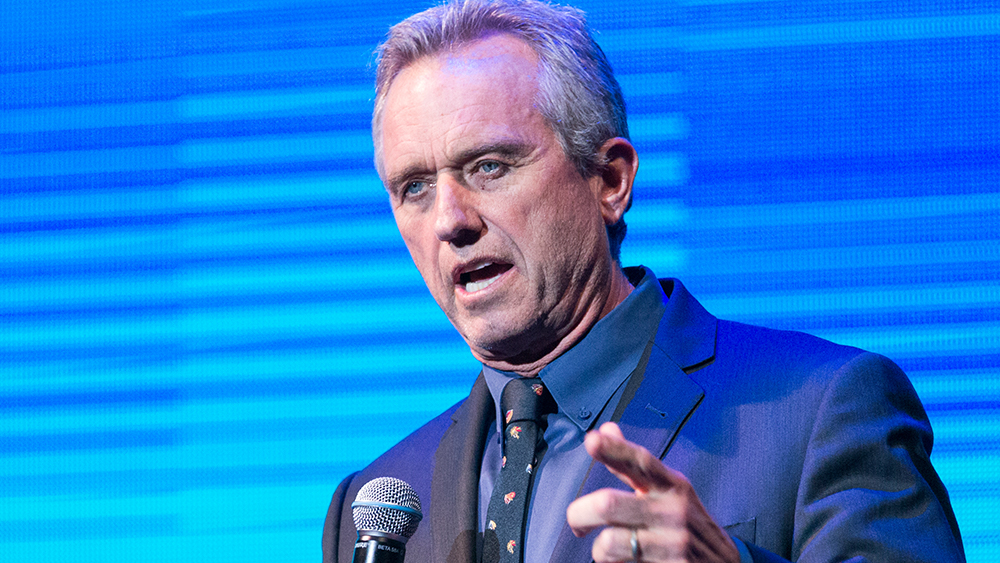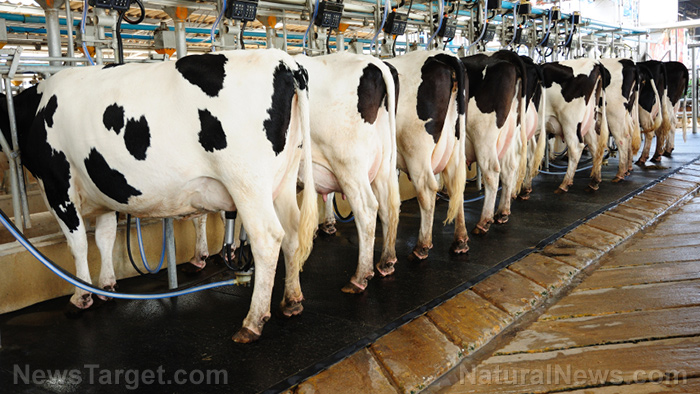Central banks are badly losing their war against FOOD INFLATION
06/20/2023 / By Laura Harris

Amid a wave of interest rate hikes by central banks across the globe, the surge in food prices continues unabated. Experts associated this phenomenon with two key factors: the inelasticity of food demand and a looming long-term supply crisis.
Despite the best efforts of central banks to rein in inflation through interest rate adjustments, the fundamental need for sustenance ensures that people will continue to purchase food even at higher prices. Simultaneously, food production faces numerous obstacles that show no signs of resolution, worsening the scarcity of resources. With global food supplies expected to reduce further in the coming months and years, soaring food prices will persist regardless of central bank policies.
While higher interest rates have had a minimal impact on food prices, their consequences for Western economies have been severe. Economic activity has noticeably diminished throughout the Western world, and Europe has already descended into a recession. Additionally, the housing bubble, inflated by the low-interest rate environment of the past, has triggered the largest commercial real estate crisis in the history of the United States.
The adverse effects of the interest rate hikes are further evidenced by the struggle faced by numerous small and mid-size banks, whose balance sheets have been severely impacted. The gravity of the situation prompted Federal Reserve officials to pause their interest rate hike campaign, recognizing the need to assess the economic repercussions of previous increases. However, despite the pause, the Fed indicated its intention to implement at least two more rate hikes later this year.
Current inflation calculation fails to capture the full extent of price increases
While this respite in interest rate hikes may provide temporary relief, it is crucial to note that the overall inflation rate has only recently begun to recede due to the slowdown in economic activity. However, critics argue that the current calculation of inflation fails to capture the full extent of price increases when compared to the methodology used in 1980, suggesting that double-digit inflation could be in play. (Related: Food inflation in the US about to reach a tipping point.)
Of particular concern is the upward trajectory of food prices within the U.S., which have continued to rise steadily. Government data indicates a 5.8 percent increase in food prices at home and an 8.3 percent surge in food prices away from home over the year ending in May. Notably, these figures may still underestimate the actual inflationary impact, given the adjustments made to inflation calculations over time.
Specific food categories are experiencing even higher rates of inflation, with frozen vegetables (18.7 percent); frozen drinks (15.8 percent); bread (12.5 percent); fats and oils (11.8 percent); candy (11.6 percent); cakes, cookies and cupcakes (11 percent); and baby food and formula (10.1 percent) all displaying double-digit price increases. The widening gap between the rising cost of living and stagnant wages has placed a considerable financial strain on American families, leading to a surge in individuals seeking additional income through “side hustles.”
This surge in food prices has resulted in a staggering increase in demand at food banks across the United States. For example, food banks have witnessed a 50 percent rise in people seeking assistance in Oklahoma since March.
Similarly, Europe is grappling with the repercussions of soaring food prices. Even with government interventions, such as tax waivers, pricing agreements with supermarkets and price controls, the cost of essential items like pasta in Italy has surged by 14 percent in the past year, outpacing overall inflation rates.
The global outlook for food production in 2023 appears grim, and this crisis is only in its initial stages. Experts warn that several long-term trends, detailed extensively in recent publications, will further devastate global food production in the years to come. The inevitability of global famine looms as the world already struggles to feed its population. Individuals must recognize the severity of these long-term trends rather than assume that the current challenges are merely temporary setbacks.
Learn more about food inflation at FoodCollapse.com.
Watch this episode of the “Health Ranger Report” as Mike Adams, the Health Ranger, talks about how food inflation makes people desperate.
This video is from the Health Ranger Report channel on Brighteon.com.
More related stories:
Thanks to inflation and food shortages, many people are barely able to afford even one meal per day.
Economist: America about to enter next stage of inflation, which will be so much worse.
Survey: Americans have changed their spending and eating habits to cope with Biden’s inflation.
Soaring fertilizer prices expected to make food inflation even worse.
Still no end in sight: Food inflation soars to highest level in 42 years.
Sources include:
Submit a correction >>
Tagged Under:
bubble, chaos, Collapse, economic collapse, economy, Europe, famine, finance riot, food collapse, food inflation, food prices, food production, food supply, Global Central Bank, grocery, hunger, Inflation, panic, price increase, rationing, risk, scarcity, starvation, supply chain, supply chain crisis, US
This article may contain statements that reflect the opinion of the author
RECENT NEWS & ARTICLES
COPYRIGHT © 2017 FOOD SUPPLY NEWS



















